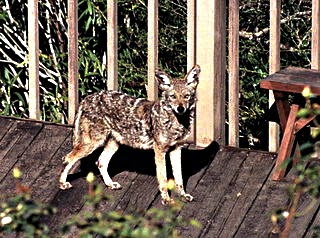 |
| King Richard III was buried under what is now a parking lot, worms and all. Image by Chris Tweed; CC BY-SA 2.0 |
“The worm of conscience still begnaw thy soul!”
So Queen Margaret curses the future Richard III in Shakespeare’s play Richard III. Though it’s not clear just how many worms of conscience the real Richard took with him to the grave, it seems some impressive intestinal worms did die with him.
King Richard III Had Worms
Remains identified as those of Richard III were recently discovered in Leicester, England. This in itself is an impressive piece of archaeology, but it gets more interesting for the parasite enthusiast: soil samples collected from beneath the pelvis of the remains contain eggs characteristic of the large intestinal roundworm: Ascaris lumbricoides, a worm that looks superficially like a large earthworm, and can grow to over a foot long. According to Roberts and Janovy, a female A. lumbricoides can produce 200,000 eggs a day.
Because soil samples taken from near the skeleton’s head, and samples taken more distantly from the remains don’t provide the same picture, it’s a fair conclusion that the eggs came from the decaying remains of the slain king and his worms. Realistically, given the period in which he lived, it isn’t surprising that those distant soil samples did contain a rare egg, and it would have been surprising if poor Richard didn’t have the parasites.
Eggs of Ascaris lumbricoides have been recovered from other archaeological sites in England dating back to at least 2600 years ago, so we know the worms were well established long before the Plantagenet dynasty came on the political scene there. The eggs are tough and resistant to harsh environmental conditions, and the toilet habits in medieval England were not exactly fastidious. The urban environment would have been widely contaminated with human feces.
Between Gardyloo and the Honey Pot Men
Early medieval communities had household cleaning rituals we find less than charming today, such as tossing the contents of chamber pots out through the window onto the street. The cry of “gardyloo!” an English adaptation of the French gare l’eau, or “beware the water,” warned passersby to step out of the way (especially in Scotland).
By Richard’s time, many people did have garderobes (closets where they went to relieve themselves) and cess pits where the waste collected. There was less rank sewage lying around in the street, but hand washing wasn’t stressed, cess pits overflowed, and surface water was contaminated.
By the 19th century, honey pot men, or night soil men collected the sewage of cities and towns and sold it to farmers as fertilizer. This practice, too, would tend to spread intestinal worm eggs around on vegetables, but according to Alan Macfarlane, it was not common in the 15th century.
Worm Eggs, Dirty Water, and Dirty Hands
Richard III did not catch his worms directly from other people: the eggs require a couple of weeks in the right conditions to be infective. And he didn’t catch them as a child and simply keep them till the age of 33: A. lumbricoides worms only live about two years. No, he probably continually reinfected himself throughout his life by swallowing the infective eggs courtesy of contaminated food, water, and fingers.
"If thou hadst fear'd to break an oath by (God),” Queen Elizabeth says to Richard in Shakespeare’s play, "both the princes had been breathing here, which now, two tender playfellows to dust, thy broken faith hath made a prey for worms."
Today, children are the group best known for putting dirty fingers in their mouths, and for having worms, but given the poor hygiene of Richard III’s day, everyone probably had A. lumbricoides then. Though they weren’t quite the worms Elizabeth was thinking of, she might have been pleased to learn that Richard was prey for worms as well, and that he’d be remembered for them hundreds of years later.
Cheng, Maria. 2013. “Richard III's Worms of Discontent: Experts Say Hunchback English King Infected With Parasite.” The Associated Press. Accessed Sept 9, 2013.
Resources
Cheng, Maria. 2013. “Richard III's Worms of Discontent: Experts Say Hunchback English King Infected With Parasite.” The Associated Press. Accessed Sept 9, 2013.
Macfarlane, Alan. 2002. "The Non-use of Night Soil in England." alanmacfarlane.com. Accessed Sept 9, 2013.
Roberts, Larry S., and Janovy, John Jr. 2009. Foundations of Parasitology. Boston: McGraw Hill.




.jpg)



_(5975362751).jpg&container=blogger&gadget=a&rewriteMime=image%2F*)












